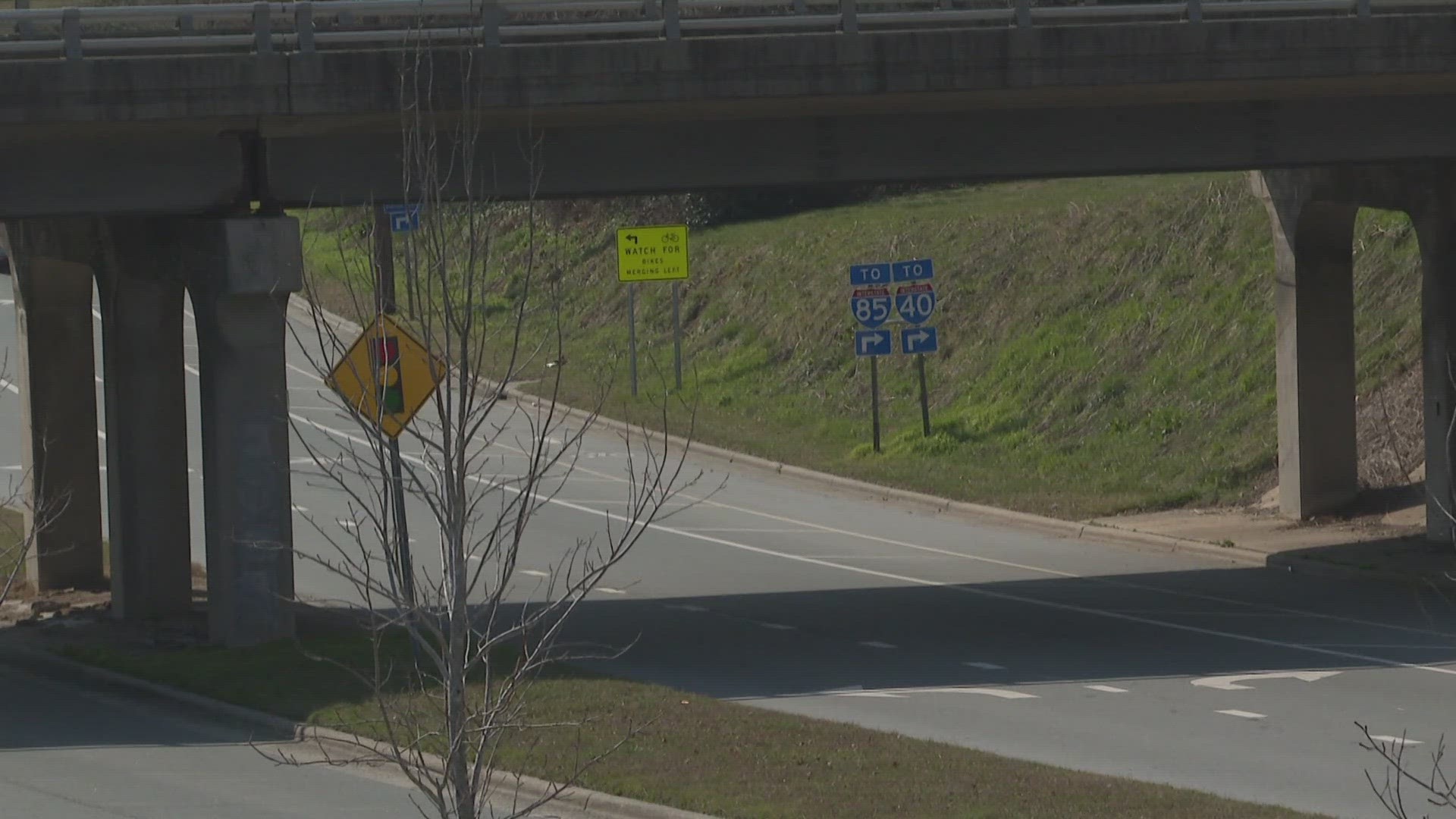GREENSBORO, N.C. — A popular bridge in Greensboro is losing pieces of its concrete and it's sparking some concerns.
The city is now installing barriers to protect those walking underneath the Gorrell Street Bridge.
Greensboro Transportation Director, Hanna Cockburn, said the department found the issues at the bridge after inspecting the 47 bridges that the city of Greensboro is responsible for during their bi-annual inspection.
"We discovered some spalling of concrete, which means pieces of concrete from the bridge had come dislodged," said Cockburn. "Out of an abundance of caution, we've put up some protective measures, so that if anything else falls from that area that appears to need some attention, we're protecting the users of the downtown greenway and preventing anything from entering into the roadway."
Cockburn assures the bridge is safe and that it passed the NCDOT inspection in 2022.
Inspectors will decide what repairs need to be made and then develop the next steps.
The results of that inspection will take about ten days.
"If we had any inkling that it was not safe to use, we would have immediately closed it out of an abundance of caution," said Cockburn. "As we complete the inspection and as we evaluate what our repair strategy will be, we know that people will be safe in the interim."
Cockburn said she has significant trust in the engineers who are doing these inspections.
"If I had any concerns about that, believe me, I would be closing it," she said. "I'm the one who closed the bridge on the AMI Greenway, so we take these things seriously and if it is, for some reason, determined to no longer be safe for use, we will take action."
The NCDOT inspects every bridge across the state every other year. That's more than 18,000 bridges.
NCDOT State Structure Engineer, Brian Hanks, said inspectors are trained every year on what to look for and the changes to policy.
Each bridge is given a score to show how to move forward.
"Each one of those bridges is given a score of zero to nine," said Hanks. "Anything from zero to four is considered poor condition. If it's a five or six, it's fair condition and seven or above is good condition. So each one of those components, the deck the beams, or the foundation, is given a score. If any one of those components gets a score of four or less, it's considered a poor-condition bridge."
Hanks said a bridge deck could be given a four, but the foundation and beams could be brand new. However, the entire bridge would still be considered in poor condition.
He said these bridges, which are considered in poor condition, are still safe, but some may have deteriorating areas.
The bridges require significant maintenance, and if needed, they will adjust their weight limits or be fully closed until fixed.
It is a case-by-case scenario, but recent state funding is helping fix those bridges quickly.
"North Carolina is lucky that we have legislators that have seen the need and so they have put funding set aside for a bridge program to help us improve our conditions," said Hanks. "The past 10 years, we've seen a steady decline of poor-condition bridges because of the financial help that we've been able to get ."
For NCDOT to replace all poor-condition bridges, it would cost more than 4 billion dollars.
You can find all of the bridge ratings here.

